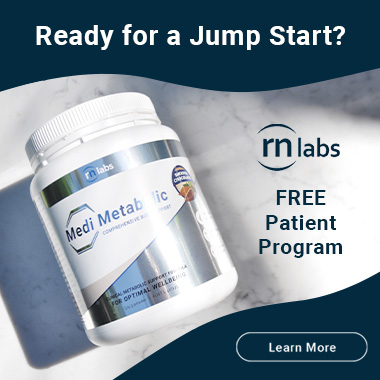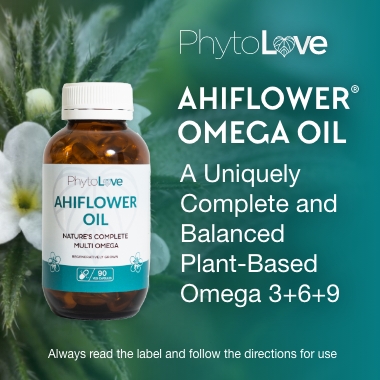Volume 33 Issue 2
Editorial
Susan Arentz PhD, BHSc(Hons)
For referencing Arentz S. Editorial. The Australian Journal of Herbal and Naturopathic Medicine 2021;33(2):52-53.
DOI https://doi.org/10.33235/ajhnm.33.2.52-53
Dear colleagues,
It is with great pleasure I introduce you to the winter 2021 edition of the AJHNM.
The pandemic continues as a major health concern, and Australia is being a described as a hermit nation as we close our borders for at least another 12 months, despite the roll-out of vaccines with demonstrated efficacy for protecting the health of citizens. Politicians have limited reach in reassuring the vaccine hesitant, many of whom will no doubt be our clients and within our professions themselves1,2, and simultaneous budget restrictions for research and higher education seem odd when transparent information is most likely to reassure Australians.
Like other health professionals, naturopaths and herbalists are ideally placed to raise and respond to vaccine hesitancy, particularly for hard-to-reach populations who mistrust straight-up conventional healthcare3. A characteristic of naturopathy and herbalism is that many of us are seen by our patients as holding information that is not biased by pharmaceuticals and other vested interests4. Researchers at universities are also uniquely placed to provide resources and support naturopaths and herbalists, as well as initiate and guide advocacy efforts for government to ensure the profession is adequately informed, including advocacy for financial support.
One of the main learnings from the AIDS pandemic was that messages and information delivered by peers was significantly more permeative than instructions delivered by authorities5. End-users (of information) felt non-judged and safer with peers, and were significantly more likely to assimilate information and adopt safer behaviours. Patients of naturopaths and herbalists report similar person-centred, collaborative peer-type communication6. They build trusting and safe clinical relationships where people feel safe to disclose things, such as their reasons for vaccine hesitancy. Therefore, arming naturopaths and herbalists with transparent and accurate evidence about vaccines (in the pandemic) could support leadership in our profession and enable a direct response to misinformation. Transparent information for naturopaths and herbalists should broadly come from both science and the humanities in order to be effective7.
Rebuilding trust in the community is the main long-term solution for vaccine hesitancy. As health educators, embedded within vaccine hesitant communities, we must take ownership of our role, draw on transparent and reliable sources, accurately interpret information and provide informed healthcare to support our patients' individual health. In-turn, we should investigate the impact of our clinical efforts using rigorous methodology and illustrate our unique position as reliable and safe health professionals with an integral role in the pandemic. This will not only support individuals hesitant about vaccines, but could also contribute to preventing viral spread and enable physical re-connecting with international communities.
This issue presents three original peer reviewed studies, and a synopsis of a relevant article published elsewhere; two are directly relevant to Covid-19. Authors’ locations are diverse, with representatives from Australia and New Zealand as well as, Iran and Canada.
The first article features a study of the use of complementary medicines in New Zealand during the pandemic. Dr Wendy Maddocks from the University of Canterbury conducted a survey to see if usage rates changed during the different level lockdowns. In a survey of 124 participants, usage had increased, usually for the purpose of preventing illness. Most respondents cited perceived benefits from the use of the natural supplements and remedies. This study describes behavioural changes due to the pandemic.
The next article by Joshua Weymouth and Rachel Arthur presents the accuracy and interpretation of the testing of plasma selenium. The literature review includes a summary of selenium deficiency in Australia and various risk factors and well as therapeutic mechanisms of selenium. The authors recommend an increase in normal reference ranges on pathology reports.
Following is an investigation by Leila Shahmoradi and colleagues into the design and development of a mobile phone-based, self-care application for chronic skin and hair conditions. Use of mobile phone technology in health has been shown to increase patients’ relationships with health providers as well as enhance personal empowerment and self-efficacy, amongst other positive health outcomes. The researchers engaged traditional medicine experts to accurately and appropriately inform the information sought and provided by the app. It has potential to not only improve health literacy of users in terms of causes, and diagnostic criterion of chronic skin and hair conditions but also to guide referral pathways and treatment decisions
Finally, a synopsis by naturopath Monique Aucoin in Canada summarises the rapid systematic review of Echinacea for the prevention and treatment of SARS-CoV-2 and other respiratory viral infections by Aucoin and colleagues, previously published elsewhere. A total of 17 randomised (placebo) control trials were included, many demonstrating efficacy for preventing infections and reducing the severity and duration of illness. In the investigation of Echinacea-associated cytokine storm, 12 studies met the inclusion criteria and were included, many showing a reduction in pro-inflammatory mediators.
I am sending thank yous to our committed peer reviewers. For many authors, the submission of a manuscript to the AJHNM is their first peer review and publication experience. Support and encouragement is often needed as well as critique and technical guidance. AJHNM peer reviewers are generous with their support; they contribute to the growing generation of naturopathic and herbal academics and developing our professions intellectual capital. Thank you, your generosity is highly valued.
I again take the opportunity to thank Dr Wendy McLean for summarising the scientific literature relevant to our practices in MedJourn and MedPlant. Thanks Wendy.
And behind the scenes of the AJHNM is Anna Simiana who has steadfastly supported advertisers, guiding appropriate placement to the benefit of industry and readers. Anna has been integral in guiding our small AJHNM team, including Dr McLean, the publisher and myself. After many years Anna is leaving the NHAA and I take the opportunity to thank her and wish her all the best in her future endeavours.
Author(s)
Susan Arentz PhD, BHSc(Hons)
Editor, Australian Journal of Herbal and Naturopathic Medicine
PO Box 696, Ashfield, NSW 2131, Australia
Email editor.ajhnm@nhaa.org.au
References
- Filice E, Dubé E, Graham JE, et al. Vaccination discourses among chiropractors, naturopaths and homeopaths: a qualitative content analysis of academic literature and Canadian organizational webpages. PloS One 2020;15:e0236691.
- Frawley JE, McIntyre E, Wardle J, Jackson D. Is there an association between the use of complementary medicine and vaccine uptake: results of a pilot study. BMC Research Notes 2018;11:1–6.
- Bradley R, Elder C. Addressing vaccine hesitancy. The Permanente Journal 2020;24.
- Frawley JE, Foley H, McIntyre E. The associations between medical, allied and complementary medicine practitioner visits and childhood vaccine uptake. Vaccine 2018;36:866–72.
- Madden A, Wodak A. Australia’s response to HIV among people who inject drugs. AIDS Education and Prevention 2014;26:234–44.
- Oberg EB, Bradley R, Hsu C, et al. Patient-reported experiences with first-time naturopathic care for type 2 diabetes. PLoS One 2012;7:e48549.
- Arvanitakis J. Arvanitakis on education: confronting vaccine hesitancy and building trust. Open Forum; 2021 [cited 2021 May 23]. Available from: https://www.openforum.com.au/arvanitakis-on-education-confronting-vaccine-hesitancy-and-building-trust/.)






